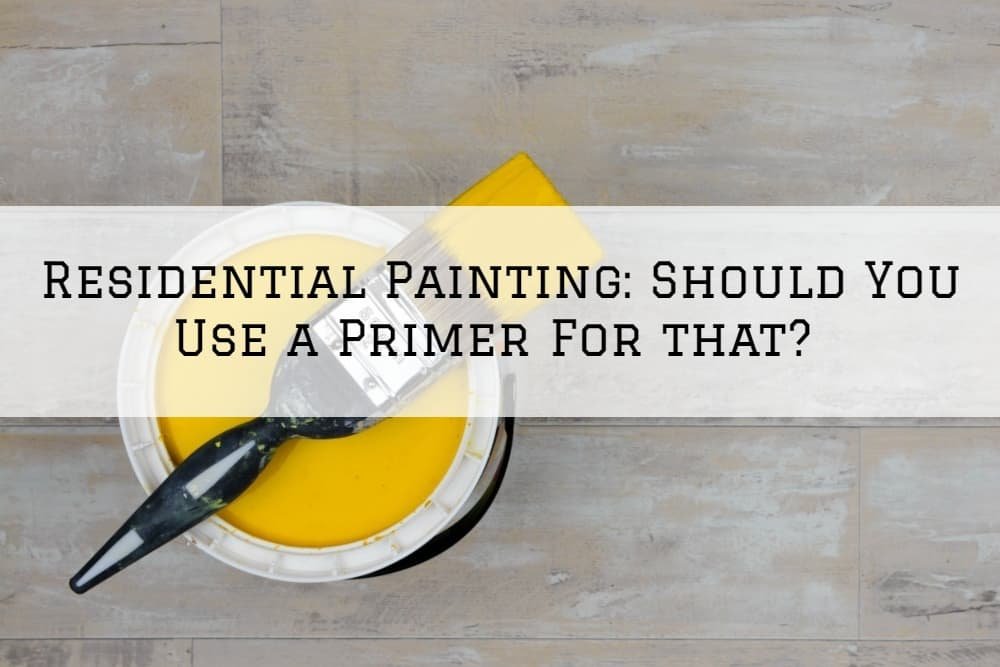Residential Painting Amador County, CA: Should You Use a Primer For that?
Residential Painting Amador County, CA: Should You Use a Primer For that?
We all know that the primer plays an important role in a paint job. But why? And what are the consequences of not using one during your painting project?
A primer is a kind of ‘insurance’ for your paint job. An investment that ensures that the rest of your painting work takes place on a solid, clean, foundation. In most cases, without using a primer, you may end up running in paint failure issues sooner than you ever expected.
Some argue that, because it is often transparent and there is no noticeable change, the primer is as functional. This is far from the case.
Primers play various roles depending on the type and condition of the surface you intend to paint.
Well, not that the primer sounds like an important addition, the next question is: which primer should you choose? Primers can have different functions and the type of primer will vary depending on these functions.
Fixing primers
Dust is the painter’s enemy and chances are your surface has collected dirt and dust over the years.
If you wipe the surface with your hand, and the paint or substrate material seems dusty, you have some cleaning and priming to do.
In this case, the primer will fix the surface so that it’s stable and dust-free during painting.
The primer must penetrate sufficiently inside the substrate, to fix the dusty problem. Most fixing primers are transparent and penetrate deeply.
Insulation primers
An insulation primer applies in the majority of cases. The primer eliminates uneven penetration of the paint and prevents certain stains such as water stains or nicotine stains from ‘bleeding’ through the paint film.
If you were not to use primer in these cases, the stains would be visible through the topcoat.
This type of primer will penetrate the substrate lesser, but will cover more regularly and will, therefore, provide a good basis for the rest of the work. As a result, you will obtain a homogeneous distribution of the paint without variations in color intensity.
Adhesion primers
As the name suggests, an adhesion primer is primarily intended to give good adhesion to very smooth surfaces, as a preparation for your subsequent painting work.
Further Details
In addition to paint adhesion and durability issues, you may get the following visual defects by not using primer:
- Dull spots (where the paint has unevenly penetrated)
• variations in gloss
• Paint overlaps or roller strokes visible on the wall
• Flaking (exterior).
Did you also know that you can now tint your primer in the color of your final coat?
Tinting the primer is a useful technique especially when making extreme color transitions, or dealing with a heavily stained surface.
The Bottom Line
While not every paint job requires a primer, using a primer before painting helps improve paint adhesion and durability, reduces the number of paint coats required, and enhances the covering power of paint.
If the surface you’re painting is in bad condition with flaking, cracking and peeling paint, cleaning, sanding, and applying a coat of paint is the best way to get flawless durable results.
Before you start painting, be sure to remove all the décor elements from the wall, remove or cover furniture, and place a canvas painting on the floor to minimize the mess.
We understand that painting can be a tall order especially if you don’t have the skills and experience required.
If you need professional help repainting your home, Michael Hines Painting can help.
Call us at 209-256-4587 to book a FREE estimate and let us help you make your interior more interesting!
And if you want your house painted in Galt, CA. We also have our other company called Galt House Painter that is still offering the same high-quality painting with the best finish.


